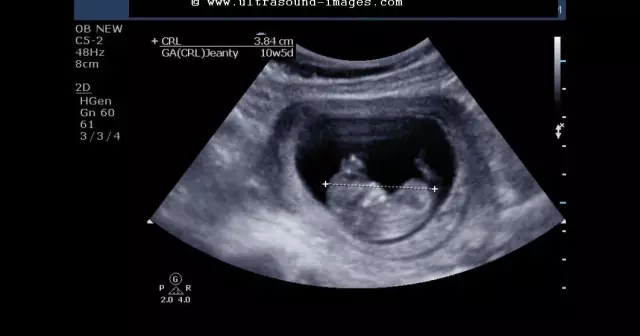- Author Rachel Wainwright [email protected].
- Public 2023-12-15 07:39.
- Last modified 2025-11-02 20:14.
Urethra
The urethra or urethra is an organ that looks like a hollow tube and is designed to drain urine from the bladder to the outside. The structure of the urethra has pronounced sex differences.

Urethra in women
The length of the urethra in women is approximately 3.0 - 3.5 cm. It starts from the bladder and is a hollow, slightly curved tube that envelopes the pubic symphysis behind and below. The posterior wall of the urethra in women is quite closely connected to the anterior wall of the vagina. Outside the period of passage of urine through this channel, its walls fit tightly to each other, thereby preventing infection from entering the bladder cavity. However, the walls of the female urethra have good extensibility, and its lumen can be stretched up to 10 mm.
Urethra in men
In men, the urethra is not only an organ of the urinary system, but also the reproductive system. In this regard, the urethra in men has a more complex structure. Its length is 20 - 25 cm and three parts are distinguished in it:
1. Prostate - starts from the inner opening of the bladder and penetrates the prostate. Its length is about 4 cm. On the sides of this part of the urethra in men are the mouths of the ejaculatory ducts;
2. The membranous part is the shortest and narrowest part of the male urethra. Its length does not exceed 2.0 cm;
3. Spongy part - the longest part of the urethra in men, having a length of 17 to 20 cm. The ducts of the bulbourethral glands open into the posterior wall of the spongy part of the urethra.
Throughout the entire length of the urethra, there are numerous longitudinal folds of the mucous membrane, causing an increase in the lumen of the canal at the time of urination and ejaculation.
Inflammation of the urethra
Inflammation of the urethra is called urethritis. Urethritis is classified as infectious and non-infectious. Infectious inflammation of the urethra is caused by specific (gardnerella, chlamydia, gonococcus, etc.) and nonspecific (streptococci, E. coli, staphylococcus, etc.) microflora. Urethritis of a non-infectious nature develops as a result of traumatic damage to the walls of the urethra during the passage of urinary calculi or when performing catheterization, cystoscopy. Other reasons for the development of non-infectious inflammation of the urethra may be allergies and congestion in the pelvic area.
The first sign of urethritis is a burning sensation in the urethra, which sharply increases at the time of urination. In addition, discharge from the urethra appears, which are mucopurulent. The symptoms of urethritis are more pronounced in men, and in women, the disease proceeds with mild symptoms, and often generally asymptomatic.

Discharge from the urethra
In many people, at the time of pronounced sexual arousal, a small amount of colorless mucus may appear from the urethra. Such discharge from the urethra is considered one of the normal options. The appearance of all other secretions is one of the symptoms of diseases of the genitourinary system:
- Purulent discharge - usually observed with infectious urethritis and accompanied by a burning sensation in the urethra. The appearance and amount of these secretions are largely determined by the type of pathogen. With gonorrheal urethritis, the discharge is creamy, greenish-yellow in color and quite abundant. With trichomoniasis, the discharge is usually frothy and scanty.
- Urethrorrhagia - discharge from the urethra outside the urination of blood. Most often it occurs as a result of mechanical trauma to the urethra, but it can also be one of the symptoms of malignant neoplasms of the genitourinary system.
- Spermatorrhea - the release of a small amount of sperm at the end of the act of defecation or urination in the absence of an erection and orgasm. Spermatorrhea is a symptom of diseases such as colliculitis and vesiculitis (inflammation of the seminal tubercle and seminal vesicles). In severe spinal cord injuries and in meningitis, spermatorrhea can be permanent.
- Prostatorrhea - the release of prostate juice at the end of bowel movements or urination and is not accompanied by a burning sensation in the urethra. In appearance, prostate juice is similar to sperm, and they can only be distinguished by laboratory methods. Prostatorrhea is observed in chronic prostatitis and inflammation of the excretory ducts of the prostate gland.
Found a mistake in the text? Select it and press Ctrl + Enter.






